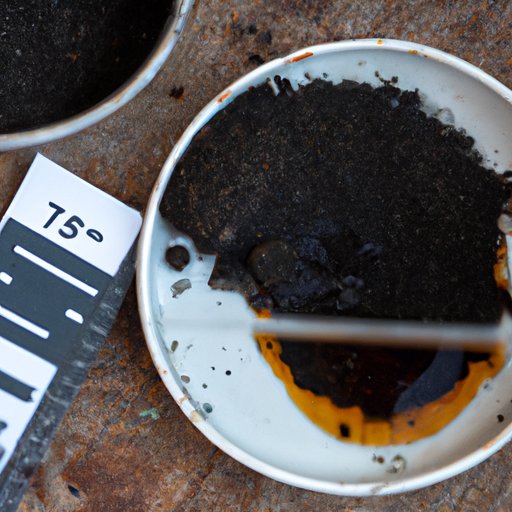
Introduction
Understanding soil pH is vital for maintaining healthy plants and achieving desired results in the garden or yard. Soil pH is a measure of the level of acidity or alkalinity of the soil. It is important to determine the soil pH to know what type of plants will thrive in a particular area. This article will provide a comprehensive guide to testing soil pH, covering different methods, interpretation of results, DIY soil pH tests, the impact of soil pH on plant health, troubleshooting, and organic gardening.
The Importance of Testing Soil pH
Soil pH plays a vital role in determining nutrient availability and the success of plant growth. When the soil pH is too low or too high, the availability of essential nutrients such as nitrogen, phosphorus, and potassium decreases. This can lead to poor plant growth, weakening of the plant’s immune system, and susceptibility to pests and diseases. The optimal pH range for most plants is between 5.5 and 7.5.
Step-by-Step Guide to Testing Soil pH
Various methods can be used to test the soil pH. Soil testing kits are available at garden centers, hardware stores, and online. A common method is to send soil samples to a laboratory for testing. A pH meter can also be used to measure the pH of the soil. To take an accurate soil sample, follow these tips:
- Use a clean container and a clean trowel
- Take samples from different parts of the garden or yard
- Gather samples at a depth of 4-6 inches
- Mix the samples together to obtain a homogenous sample
- Dry the sample before testing
To interpret test results, compare the pH level to the pH range recommended for the type of plant or crop to be grown. Soil amendments can be added to adjust the pH level to the desired range. Lime is used to raise pH levels, while sulfur is used to lower pH levels.
DIY Soil pH Test
If you prefer a DIY approach, there are simple tests that can be done using household items. One of the most popular is the vinegar and baking soda test. Follow these steps to conduct the test:
- Collect a soil sample and divide it into two parts
- Add vinegar to one part of the soil sample and observe the reaction
- If the soil bubbles or fizzes, it is alkaline with a pH of 7 or higher
- Add baking soda to the other part of the sample and observe the reaction
- If the soil bubbles or fizzes, it is acidic with a pH of 5 or lower
Note that this test is not as accurate as using a testing kit or pH meter.
Understanding Soil pH Levels in Different Regions
Soil pH levels differ in various regions due to differences in soil type, climate, and rainfall. For example, if the soil is rich in limestone, it is more likely to be alkaline. Areas with high rainfall are more likely to have acidic soil due to leaching of minerals from the soil. It is crucial to understand soil pH levels in your region to grow plants successfully.
The ways to adjust pH levels can vary depending on soil type and the nutrients available. Soil amendments can be added to raise or lower pH levels, but the application rate may differ. For example, sandy soil requires less lime than clay soil.
Troubleshooting Soil pH Issues
Common issues related to soil pH include nutrient deficiencies, stunted growth, and disease susceptibility. If the pH level of the soil is not within the recommended range, plants cannot absorb nutrients efficiently. One way to correct pH imbalances is by adding natural soil amendments such as compost, manure, or garden lime.
Over-watering or under-watering can also affect the pH level of the soil. To prevent this, it is important to follow watering and fertilization schedules recommended for specific plants or crops.
Soil pH and Organic Gardening
Maintaining a proper pH level is especially important in organic gardening because the soil must contain sufficient nutrients and beneficial microorganisms to support plant growth. Soil pH affects the soil microbes that break down organic matter and convert it into nutrients that are available to plants. The presence of these microbes is a crucial aspect of organic farming for natural pest control and soil fertility.
When adjusting pH levels in organic gardening, it is recommended to use natural amendments such as compost, lime, or wood ash instead of chemical fertilizers. This will help promote soil fertility while remaining organic.
Conclusion
In conclusion, testing soil pH is a crucial aspect of successful gardening or farming. Understanding the pH level of the soil ensures that appropriate crops or plants are grown, and it promotes strong, healthy, and robust plants. This article has provided a step-by-step guide to testing soil pH, including various testing methods, interpreting results, DIY testing, troubleshooting, and organic gardening. Applying this knowledge in your garden or yard will help you achieve the desired results and become a successful gardener.




